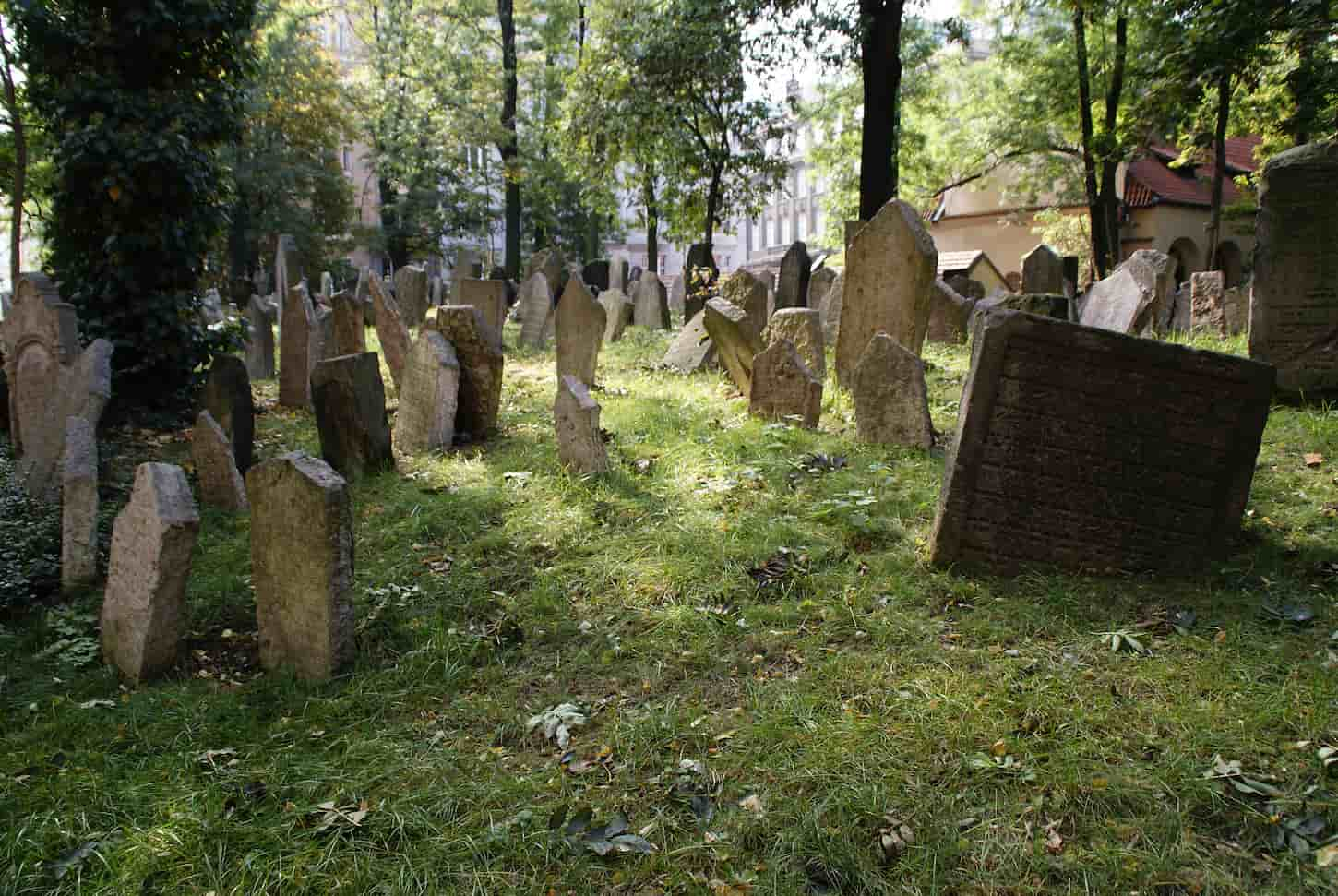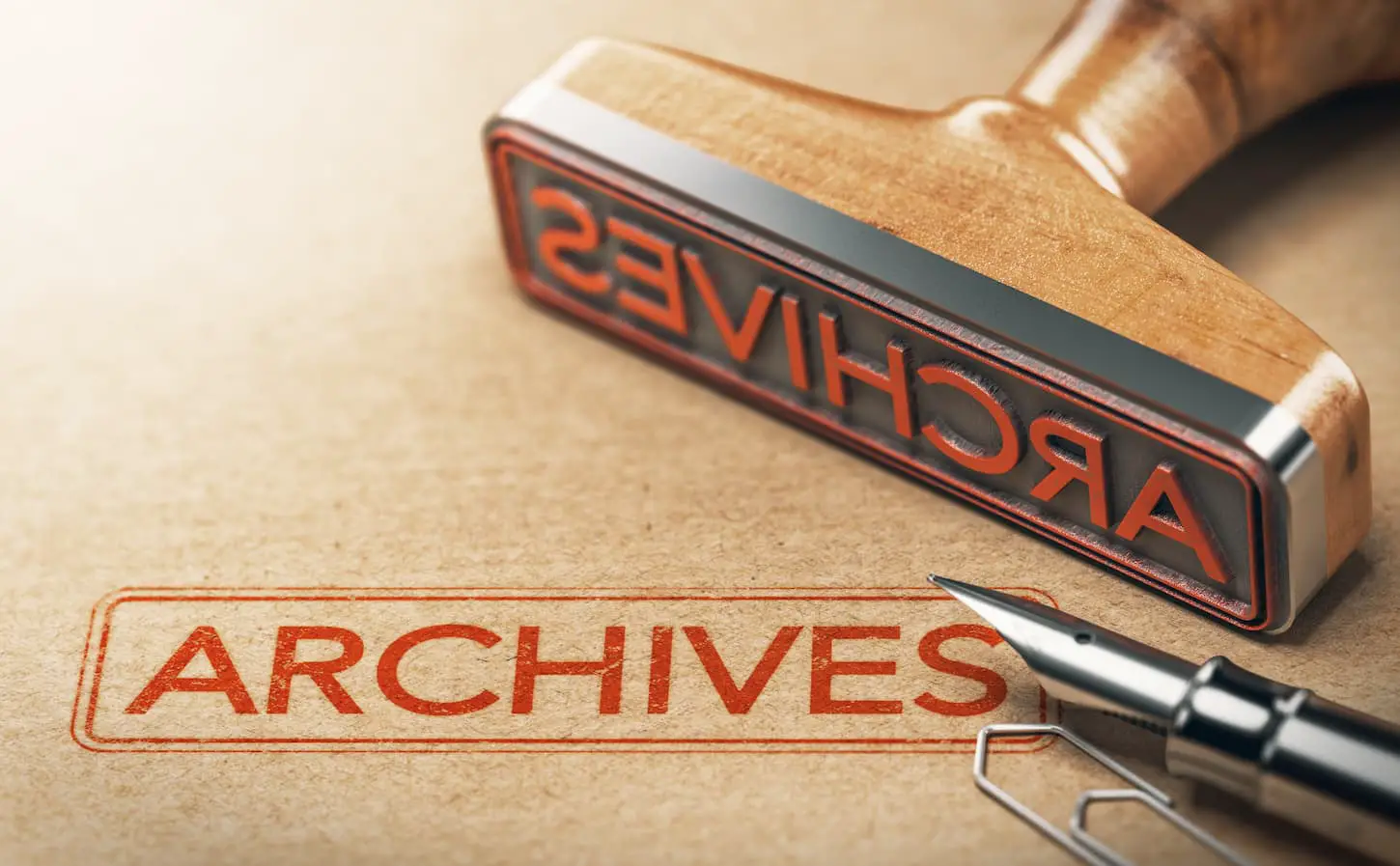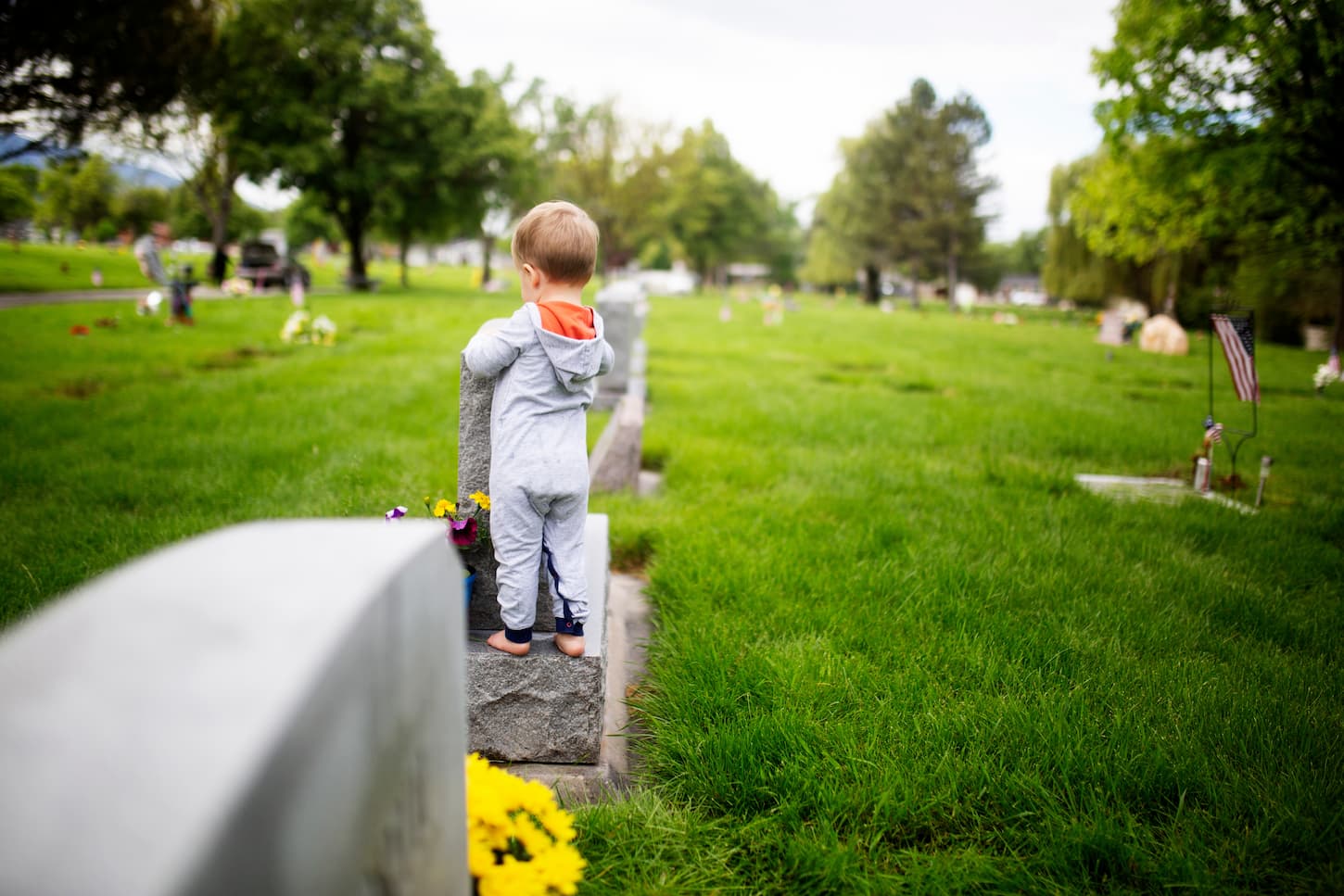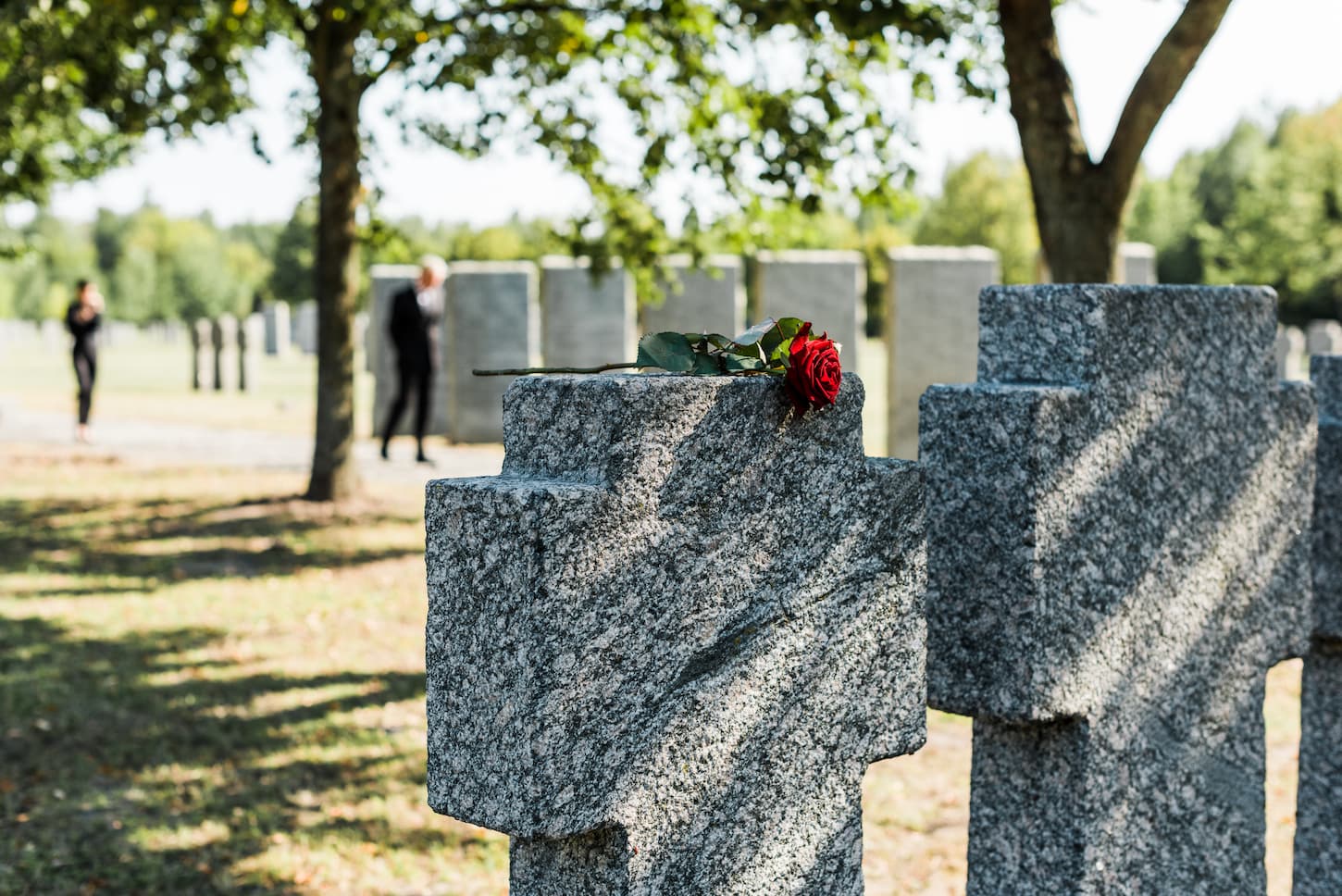Trying to put together a family’s history and checking out where ancestors are buried is a pretty important step. However, it’s not always a straightforward process. While there are a few go-to steps that normally work (check out the next section below), sometimes it can take a little more legwork.
The first step is to determine when and where the ancestor died. Internet searches and asking local sources are also good ideas. Burial records can help us work out important information such as who the living relatives were.
It’s also rewarding to visit the burial site and feel the physical connection to the past. Don’t worry though – regardless of whether the ancestor was buried in the US, buried abroad, or even cremated, we’ve got your back!
We’ve also included some advice that might help in some other tricky circumstances, such as if they’re buried in an unmarked grave or a lost ancient cemetery. Read on to find out exactly where to begin tracing your own ancestor’s burial plots.

How to Find Where an Ancestor is Buried in 3 Simple Steps
It’s a good idea to start the search by establishing exactly when and where the relative died. If this information is unavailable, a death certificate is the best source of information (and may also show the burial location).
While it’s sometimes frustrating trying to find an ancestor’s burial place, it might help to know that we’re not alone. In fact, since the birth of the internet, people have shared their frustration and creating resources that will help us do exactly that.
We recommend these steps and sources to anyone who is looking for their ancestor’s final resting place. They don’t necessarily need to be done in this order, but it’s the most logical way.
Gathering little details like dates and places will prevent a big hassle in the long run. You don’t want to risk the confusion that can happen if two people with the same name come up!
Step 1: Figure out when and where they died
Depending on where the ancestor lived, both birth and death certificates may be available upon request. A common stipulation is that birth was more than 75 years ago, and death was more than 50.
Don’t worry if there is no access to the death certificate. It’s a good enough start to narrow this down even by country/state and a rough date (say, within ten years). Unless the relative had a particularly common name, this will likely eliminate any doppelgängers from your search.
Establishing a location, in particular, will help work out the next steps, although there are national and international records of burials. Local resources are much more likely to have background information about ancestors.
While they can be harder to find, written records are also often much more comprehensive than digital ones. Although many diligent archivists have digitized burial information, particularly in Europe and US-based cemeteries, it’s a pretty impossible amount of data to cover – so inevitably not everything is online.
Death certificates are a relatively new thing, so here are other good places to look for a death place.
- Search for an obituary
- If there is a census record available around the time you think they may have died, see which census records they are on.
- Check church records.
- Look at the social security death index.
- Try looking in areas where living children are located.
Also, keep in mind that people may not be buried where they died. Often, deceased individuals may be transported and buried to be buried with spouses or other families “back home,” which can sometimes be quite a distance away.
Step 2: Use internet searches
Once you get a rough idea of this, get ready to sit behind the keyboard and start scouring the internet. Thankfully, people have been pretty keen on this stuff ever since the internet was invented, so there are some great sites out there that can help.
Findagrave.com, billiongraves.com, cemeterycensus.com, and interment.net are all terrifically helpful websites and will let someone search not only based on the ancestor’s name, location, and birth and death dates but also help to widen the search parameters if nothing comes up.
If you happen to find the ancestor you’re looking for but they don’t have a headstone picture, you can request one. Give it some time, and a volunteer will take a picture for you.
One more website to note – Grave Locator – National Cemetery Administration (va.gov) is great for finding graves of those who served in the military.
All of these websites have huge international databases of graves, so there is a reasonable chance of finding where an ancestor’s burial place is from the comfort of your own home!
The Archives Library Information Center (ALIC) of the US government website is a fantastic resource, with links to all kinds of handy resources that’ll help you not only find ancestors’ graves but also find out more about their lives.
If you’re lucky enough to get a hit from one of these websites and find out the exact location, then congratulations! Jump forward to step 5, which will help you check that the grave is still intact if planning a visit.
The search websites are great, but it can also be a surprisingly effective method to type an ancestor’s name directly into google, especially when combined with the state, county, or city you think they might be buried in.
If that’s still not flagging up any hits, then it might be time for deeper investigations the old-fashioned way…
Step 3: Ask local sources
The internet is great, but don’t forget that people have been tracing their ancestry since way before it, so sometimes the most comprehensive methods are the analog ones.
Physical sources are a great place to start. If you know the location and date of an ancestor’s death, try checking out the archives of local newspapers, which may have announced funeral details.
Likewise, funeral homes and churches often keep records of those in their care, so after contacting a few in the area an ancestor is thought to be buried in, you might get a hit.
An often overlooked resource is older relatives, who may have researched this information already or know someone who does.
Many of these resources are digitized in Google’s archive of local newspapers but have far more content in print copy and written records.
Here’s a really cool note from Breanne on obituaries.
Obituaries in newspapers are actually a jackpot if you can find one. They will give you so much information!
As far as digitized newspapers (for obituaries), here are some places to start.
- Newspapers.com requires a paid subscription, but it’s the best source.
- Ancestry.com has a huge library of newspapers, too.
- Local college libraries are a regular place for newspaper archives to be found. The only downside here is that the most comprehensive way to check is to pick up the phone and start calling around local campuses.
Death certificates are the best and most popular source for death and burial information, but death and burial can actually leave quite a paper trail.
Other records that are possible (but admittedly, more difficult to find, especially online, are:
- Medical examiner or coroner’s office records
- Mortuary records
- Funeral home records
- Permits for burial
- Authorizations for a body to be transported over state lines if the person was buried out of state
- Cemetery records
- Town records
- Resources found at the state’s cemetery commission
Talking to people in person can be super helpful. Recordkeepers and local historians are normally very enthusiastic about their work, so will be happy to receive your interest.
Even if they don’t have the answers you’re looking for directly, they may have other resources of interest in local areas.
There’s a surprising amount of local museums around that can help. Did you know that the USA actually has way more museums (35,000) than McDonald’s (14,000) and Starbucks (11,000) branches combined?
These types of sources also often have information that turns out to be even more interesting than what you were originally searching for, and can give some great insight into how your ancestors might have lived.
If none of these usual steps, then it might become a bit trickier. Don’t worry though, read on below where we’ll suggest some think-outside-of-the-box ways that might help to find an ancestor’s burial place.

How to Find a Grave When the Usual Steps Don’t Work
One place that’s definitely worth checking is mercantile store records. If an ancestor died between 1700 and 1900, and there is a rough idea of where then this is a very useful (though time-consuming) resource to use.
Don’t panic if those 3 simple steps didn’t help to find an ancestor’s grave. There are a few more ways to check. Try local handwritten records, such as mercantile store records, or the records of other services that the relative might have used.
Mercantile stores were often responsible for burials in this time period, so it’s very likely that their records will show receipts for funerals, as well as associated materials such as coffins.
Today, local historians often curate these records. They can be super interesting, as looking at receipts shows us a lot about not only who people were but also how they lived.
If they died after 1900, it is a good idea to ask local hospitals, care homes, and funeral homes if they have any record of a relative. Local newspapers can help, too; they might have written an obituary for the relative, or even an article if they’d done something newsworthy.
If you suspect that the ancestor had no living relatives, then contact the Public Administrator or Coroner. This department is responsible for dealing with the disposal of deceased people when they have no relatives to do this for them.
They may have arranged either for the burial or cremation of an ancestor and will have the records to match.
Of course, checking physical records is a much less daunting process if the search has been narrowed down to a specific place. I wouldn’t want to search a whole country like this!
If unsure of a place, try starting with other important locations in their life – such as workplaces if you have that information, the location of their wedding (from a marriage certificate), or where their children were born (from birth certificates).
How to Find Out Where Someone Is Buried – for Free!
Local historians also often work on a volunteer basis, powered solely by enthusiasm for local history. However, it might be a nice idea to donate to a local museum or heritage society if they help find the information needed since preserving heritage does cost money.
Thankfully, all of the above steps are free of charge. All these internet sources are – and with each of them using huge databases it’s pretty likely something will turn up there.
How Do I Find Out Where My Grandfather is Buried?
The first resource that is good to use when looking for the grave of a relatively recent death is the immediate family. If there are surviving relatives, they may well have been to the funeral, which will give access to the burial location (or at the very least, some idea).
To find a grandparent’s burial place, a good first step is to use family knowledge. Even if no one knows a precise location, establishing an area and date of burial will help to get this information.
The more generations back we go, the more difficult it can be to find a burial location. Thankfully, this means that finding a grandparent’s grave shouldn’t be too difficult.
Just like in all the steps above, the most helpful information you can get hold of is the location and date of the burial. You might find these from a death certificate, or just from some relatives by word of mouth.
Once obtaining this information, you will be able to follow the steps above and find a grandparent’s final resting place in no time at all!
Finding out if your grandfather served in any of the various conflicts or when he got his citizenship can also help you figure things out, so make sure you read any of our relevant articles on those topics:
- Family History: When Did Granddad Become a Citizen?
- How To Find An Ancestor Who Disappeared: 29 Tips to Get Started
How Do I Find Out Where Someone is Buried in Another Country?
If an ancestor is buried in another country, things can be a little more complex when we want to find their grave. The most powerful ally is likely to be a death certificate; most countries issue these. Depending on which country you’re searching in it may show the burial location.
It’s worth mentioning that you should still start with internet searches; these online databases have info from not just in the US but all over the world, and someone may even find more local databases that give out more information.
If an ancestor was a US citizen who died abroad, try contacting the Bureau of Consular Affairs, which works with local embassies and consulates.
These institutions would have had a record of the individuals living in the country, and also would have recorded their death in a document known as the Consular Report of the Death of an American Abroad.
This approach is especially likely to get results if an ancestor died within the last 100 years or so.
If they died long ago, or you can’t find records, things get tricky again. However, the steps above in ‘How to Find a Grave When the Usual Steps Don’t Work’ will help (that link will jump you back to it). Enlisting a translator or local citizen is a fantastic idea in order to talk to people.

How Do I Find Out if Someone Was Buried or Cremated?
If unsure whether or not an ancestor was buried or cremated, try to get hold of the death certificate. This is dependent on the location of the death, and it will probably list this information.
If it doesn’t or you can’t get hold of this information, follow the above steps in the ‘How to Find a Grave when the Usual Steps Don’t Work’ section (that link will jump you back to that part of the article). Most likely one of these avenues of investigation will turn up the information you’re looking for.
If the ancestors died without close relatives to manage the burial or cremation, try to contact the Public Administrator or Coroner. They will have been responsible for this process, so will have the records you need.
How Do I Find Old Cemeteries?
By cross-referencing their locations on older maps against landmarks such as churches or roads it can be determined where these locations are today (even if they’ve been built upon or been reclaimed by the land).
Old cemeteries can be super hard to find. Although cemeteries often last for hundreds of years, sometimes they stop being looked after and slowly disappear. Some older burial sites (such as plague pits in Europe) may even have just been covered and disappeared into local folklore.
When hunting for one of these lost old cemeteries, you’ll probably need to investigate some physical sources. Old maps and records, often curated by local museums and historical societies, may well show the location of these.
Bear in mind that old cemeteries will sometimes have been sold and no longer be public property.
There are some famous cases of burial sites being uncovered when private landowners dug new foundations for building, most famously the discovery of King Richard III underneath a car park in Leicester.
Always make sure to check the ownership of the land before going hunting for the cemetery to make sure you’re not accidentally trespassing.
How Do I Find Old Grave or Death Certificates?
The internet is the first place to look – and there are websites that are made just for this purpose. There are links available on these sites that will help to find either the certificates or people who can help. These certificates are more than likely public domain since they are so old.
Finding old certificates can be a double-edged sword – on the one hand, their age means that they’re less likely to be digitized, while on the other it means that the information is more likely to be public domain.
Thankfully, some websites exist for exactly this purpose. A good place to start looking for these is the ‘Vital Records’ page of the US government archives website. This page has loads of handy links that might help find the certificates needed, or direct you to the people who can.
Frustratingly though, these certificates (and their availabilities) do vary by state authority. The first step you should take is to identify the state that you’re searching, for before looking into the relevant department that can help you.
It may take some time to look for an old death certificate, but once you’ve got one it will make finding an ancestor’s grave infinitely easier.
Are Burial Records Public Information?
In many states, burial records are public information. However, this does vary. Some states consider burial details part of an individual’s confidential medical information, while others consider their public information as records of death.
When looking for burial records, it’s worth a cursory Google search to find out whether these records are public in that state so that you don’t waste your time searching for something confidential.
Are Cemetery Records Online?
Cemetery records can be found online. There are quite a few websites that offer access to these archives. That being said, the best go-to way to find cemetery records would be to call the cemetery.
I’ve done that multiple times they’ve looked through the records and found me information on the spot.
Websites such as Findagrave.com, billiongraves.com, cemeterycensus.com, and interment.net can help you find the graves of your descendants with minimal effort, from the comfort of home.
If these records aren’t online, don’t worry. While these websites are great resources, they’re by no means exhaustive lists. Just read the steps above which should help on this journey.
How Do I Find a Cemetery Burial Plot Map?
To find a burial plot map of a cemetery, just contact the cemetery office. After all, they lease out each plot, so they need to have their own records of the plots in order. If the cemetery is no longer well maintained, this map may be found in a local museum or historical society.
Burial plot maps are super useful information, not just for helping you find the ancestor you’re looking for, but unexpected matching surnames may be found that give a lead on more relatives.
Plot maps are also the best way to find an unmarked grave.
If you’re there in person, most cemeteries have the map on an easy-to-find board on the grounds. If you can find the person in BillionGraves then it will give you the GPS coordinate of the burial site and lead you to the specific location of your ancestor’s burial.
That being said, sometimes the GPS location is off by a few feet. So don’t feel bad searching around or asking the cemetery care workers to help you find anything. Those people are geniuses, and their maps are far more accurate.
How to find an unmarked grave in a cemetery
Once the cemetery has been found where the ancestor is buried, finding an unmarked grave is less difficult. Just contact the cemetery office, which will be able to give directions to the right plot.
Although unmarked graves don’t have headstones, they are determined plots so the cemetery office will have a record of where they are and be able to direct you to where it is.
This happened to Breanne a few months ago, so here’s her story.
I went looking for an ancestor in LA. I knew what lot and plot number I was looking for, but then I couldn’t find anything with her name on it in the right location. I called the office and they confirmed that I was in the right spot but there was no headstone for her.
Breanne, who had more fun going to the cemetary than Disney, because she’s awesome like that.
Key Takeaways and Next Steps
With such a big topic (after all, an estimated 100 billion people have lived in the past) of course, there’s a huge amount of information to find, even related to graves.
Finding a grave can seem impossible, but don’t give up. Find what you can and keep moving forward. Don’t be afraid to look in all the “wrong” places – because you might just find a clue to help you move forward.
And speaking of never giving up, make sure you read this article next, as it may just help you find that next step you need to find your ancestor’s gravesite. Here it is: How To Find An Ancestor Who Disappeared: 29 Tips to Get Started.

Resources
When learning about genealogy, it’s important to learn from various reputable sources. These are the sources used in this article and our research to be more informed as genealogists.
- “BillionGraves Home Page.” BillionGraves, billiongraves.com. Accessed 19 Mar. 2022.
- “Cemetery Census.” Cemeterycensus.Com, cemeterycensus.com. Accessed 19 Mar. 2022.
- Daily, Family History. “Here’s How to Find a Grave for Your Ancestor Online.” Family History Daily, 14 June 2018, familyhistorydaily.com/genealogy-help-and-how-to/find-a-gravesite.
- “Find a Grave – Informatie over miljoenen begraafplaatsen.” Findagrave.com, nl.findagrave.com. Accessed 19 Mar. 2022.
- Johnson, Steve. “How Do I Find Out What Cemetery Someone Is Buried In?” Interment, 20 Mar. 2020, www.interment.net/help/find-out-where-someone-is-buried-for-free.htm.
- Lisa L. “How to Find Where Your Ancestors Are Buried.” Are You My Cousin?, 9 Nov. 2021, lisalisson.com/how-to-find-where-your-ancestors-are-buried.
- “Tricks for Finding the Unknown Burial Location of an Ancestor.” Ancestral Findings, 29 Sept. 2019, ancestralfindings.com/tricks-for-finding-the-unknown-burial-location-of-an-ancestor.
- “Vital Records.” National Archives, 24 Sept. 2019, www.archives.gov/research/alic/reference/vital-records.html.
